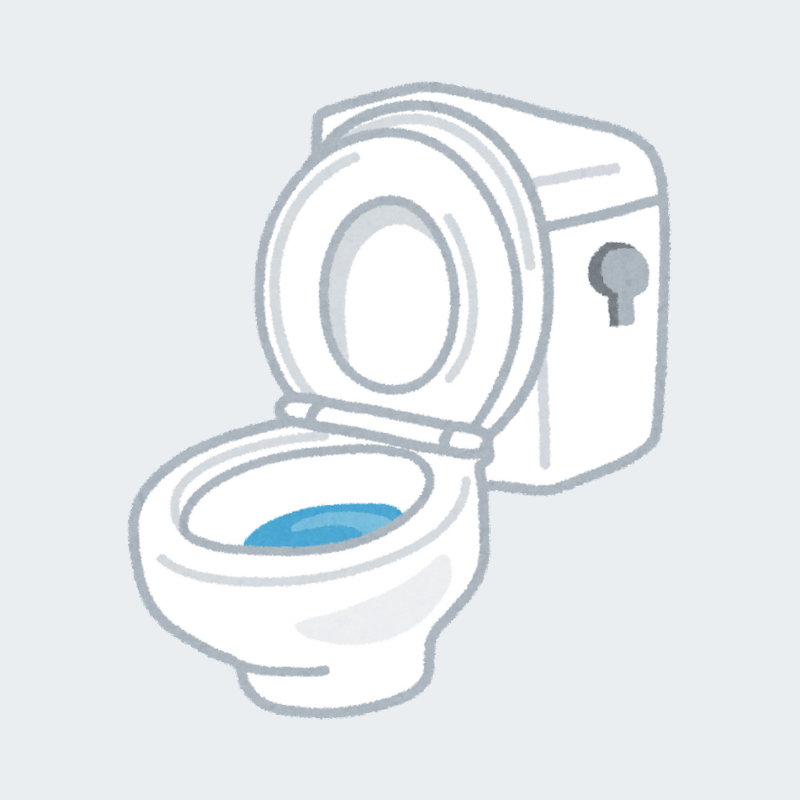A well-functioning toilet is an essential requirement of everyday living, and when problems arise, they can overfill, overflow, or pierce your nerves with the neverending sound of running water. These problems are not difficult or time-consuming to repair, but understanding why they occur will take some education.
In this article, we will learn about the components of a toilet and how they function in unison to remove waste and transport it to the sewer system. We will then describe the various scenarios that can lead to a leaking toilet and measures that can be taken to prevent toilet leaks, overfills, and overflows.
How A Toilet Works
Water enters the toilet tank from the main water supply, where it is held until the toilet is flushed. Once the flush handle is depressed, the water from the tank falls by the force of gravity into the toilet bowl, and a siphoning effect takes place, drawing the contents of the bowl and the water out of the toilet through the trap and into the sewer line.
Components
This process requires the toilet’s components to work together to remove wastewater and keep homes clean and sanitary. Here, we will describe each part and its function.
Tank
The tank is the uppermost part of a toilet. It holds standby water, which is used to rinse the toilet bowl after it has been flushed. The tank refills after a flush, so it is full and ready for subsequent use.
Bowl
The toilet bowl sits below the toilet seat and is a collection vessel for human waste. It holds the waste until the toilet is flushed and is emptied by water passing from the tank through the bowl.
Water Supply Line
Water enters a residence and is distributed to various fixtures and appliances throughout the home. Water flows through the supply line and the fill valve to fill the toilet tank with a predetermined amount of water. Once the tank is full, the water shuts off.
Float
The float is the component that monitors the amount of water being delivered to the tank. Once a specific amount is provided, the float signals for the water supply to turn off.
Flush Handle And Chain
After using the toilet, the flush handle is depressed. This action lifts an attached chain secured to a rubber flapper on the toilet tank floor. The handle and chain activation allow water to leave the tank and enter the toilet bowl.
Flapper
The flapper is an essential component of the toilet’s operation. It acts as a watertight seal to keep water in the tank until needed. This component frequently wears out and requires replacing as part of routine maintenance.
Refill Tube
This tube connects the refill valve to the overflow tube and helps the tank refill with water following a flush.
Overflow Tube
This part, located inside the tank, ensures that excess water does not flood and overflow onto the floor. It does this by allowing water to flow down into the toilet bowl when the water level exceeds its height.
Flush Valve
When the toilet is flushed, water exits the tank through the flush valve and lifted flapper located at the base of the flush valve. The water is used to empty the bowl and move it to the sewer line.
Causes Of A Running, Overflowing, Or Overfilling Toilet
An overfilling toilet can lead to a toilet that overflows onto the surrounding floor or one that continuously runs. Neither of these conditions is desirable. Here are the common causes of a malfunctioning toilet.
Chain Too Long
When the handle is depressed, and the chain lifts the flapper, if the chain is too long, the flapper will not return to its resting position. It must sit squarely on the tank floor to make the necessary watertight seal, or water will leak, causing a running sound.
Shortening the chain will fix this problem.
Float To High
If the float’s position is too high, water will hit the overflow valve before the float turns off the water supply, causing the toilet to run indefinitely.
To remedy this issue, the float needs to be adjusted to the correct height.
Leaky Fill Valve
The fill valve is responsible for filling the tank, and if it is leaking, the water can overflow into the overflow valve. This prevents the toilet from overflowing, but it keeps the toilet running.
If the fill valve is leaking, it will need replacing.
Worn Out Flapper
The flapper is prone to wearing out, leaving it unable to create a seal between the tank and the bowl. This allows for water to trickle out of the tank, wasting water and increasing the water bill unnecessarily.
Replacing a worn flapper is inexpensive, takes little time, and should be part of routine toilet maintenance.
Refill Tube Too Long
The refill tube needs to be positioned over the overflow valve, but when it is too long, it sits inside the valve and creates a siphoning effect. The tube continuously pulls water out of the fill valve and causes the toilet to run.
Shortening the refill tube will allow it to sit in the correct position and to end a running toilet.
Looking To End A Running, Overfilling, Or Overflowing Toilet?
A leaking, overfilling, or overflowing toilet wastes water and can lead to puddling water alongside the toilet, damage to the subflooring under the toilet, or mold and mildew growth. It can also lead to excessively high water bills, which are just as annoying as the sound of a constantly running toilet.
We offer toilet repair to eliminate these issues and restore your toilet to optimal functioning. Give us a call today to schedule an appointment and put an end to your toilet troubles!

